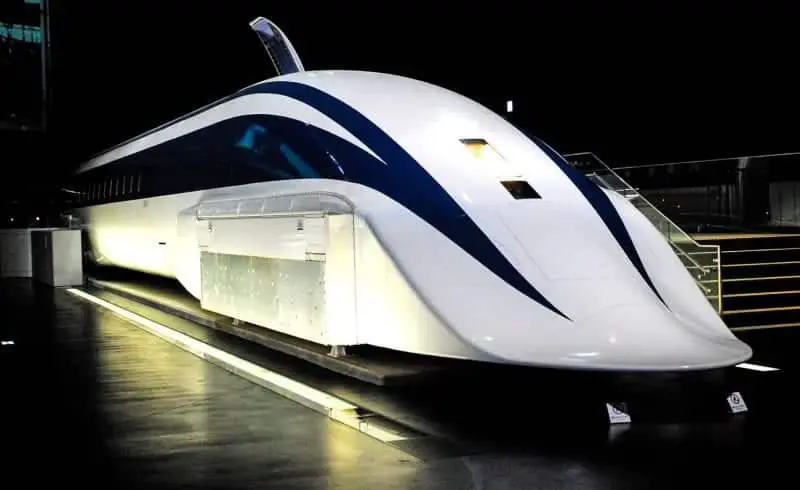Well, there was a time when physicists used to believe that an element or metallic alloy will never lose its all-electric resistance. In other words, during the flow of electric current in any material, there will always be a loss of energy. But this classical view was drastically changed with the emergence of superconductors.
In this article, I will give you a brief analysis of superconductors regarding their definition, history, types. More importantly, I will also talk about some of the most important applications of superconductors in real life. So, just buckle up for this nasty ride. And, let me know if you lost your energy or not.
What are Superconductors?
What are superconductors anyway? Superconductors are material or an alloy when cooled or condensed below a certain temperature (call it a superconducting transition temperature), it drastically loses all its electrical resistance. In other words, there is no loss of energy in any form.
This zero resistance phenomenon came to be known as superconductivity. And the material that exhibits these properties are called superconducting materials. The current which flows during superconductivity is famously known as a supercurrent. Simply because there is no loss of energy in any form.
Ideally, not all the materials, when cooled below the threshold temperature behaves as superconducting materials. I mean, elements like Li, K, and Na when cooled down to 0.08°K have not shown any kind of superconducting behavior. On the other hand, those materials which show zero resistance behavior, have their own value of superconducting transition temperature.
Must Read: Zener Diode Introduction – a Brief Review
A Brief History Of Superconductors
If we go deep down the historical timeline, it was the Scottish physicist Sir James Dewar along with English electrical engineer Sir John Ambrose Fleming, who started the quest to find electrical resistance at very low temperatures. Together, they both predicted that at very near to absolute zero, any material will lose all its electrical resistance.

Their research was carried forward by German Scientists Carl Von Linde and William Hampson. Linde and Hampson designed a process called Hampson-Linde Liquefaction Process. A process that was basically used for the liquefication of gases. Later Dutch physicist Heike Kamerlingh Onnes reinvestigated the Sir James Dewar research paper. And fused it with the Carl Von Linde and William Hampson design to check the electrical resistivity of solid mercury at cryogenic temperature.
In order to achieve Cryogenic temperature, he used liquid helium as a cooling refrigerant. Onnes finally published his research paper in 1911, titled ” On The Sudden Rate At Which The Resistivity Of Mercury Disappears”. He showed that when mercury is cooled approximately to 4 degrees Kelvin, mercury loses all its electrical resistance. Hence, becomes a superconductor. In the year 1913, for his search on the superconducting behavior of mercury, he earned his Nobel prize in physics.
After Kamerlingh’s Work
Soon after the discovery of the superconducting behavior of mercury, different types of independent research started to surface. Around 1933, two German Physicists; Walther Meissner, and Robert Ochsenfeld discovered that when a material behaves as a superconductor, it expels the applied magnetic field. This magnetic expulsion phenomenon came to be known as the Meissner Effect.
Editor’s Choice Alternating Current (AC) vs Direct Current (DC) in Tabular Form
Later, research was done by London’s Brothers ( Fritz and Heinz London) and two Soviet-era physicists Lev Landau, and Vitaly Ginzburg (Ginzburg-Landau Theory) predicted that Superconducting materials can be bifurcated into two categories named Type I and Type II (which we will discuss in our later section).
Types of Superconductors
Well, there are several different criteria according to which superconducting materials can be classified. Let’s discuss them one by one.
Depending On Their Magnetic Property
Depending on their magnetic property, superconducting materials can be categorized into two groups. These are Type I Superconductors and Type II superconductors.
- Type-I superconductors strictly follow the Meissner effect. On the other hand, Type II superconductors do not follow the Meissner effect.
- Type-I superconductors have only one critical field i.e Hc. On the other hand, Type II superconductors have two critical fields i.e Hc1 and Hc2.
- Last but not least one, Type-I superconductors act as a good conductor at room temperature. On the other hand, Type II superconductors are not particularly good conductors at room temperature.
Highly Recommended: What is Laser Diode? Construction, Types, Working & Applications
Depending on their critical temperature
Well, at the time when superconductivity was discovered, the whole scientific world used to think that superconducting behavior can only be achieved around absolute zero. But in the year 1986, German physicist Johannes Georg Bednorz and Swiss physicist Karl Alexander Müller completely changed the world’s view about superconducting materials.
They discovered that when barium is doped with lanthanum and copper oxide; it drastically loses its electrical resistance around 35 kelvin. Hence, become a superconductor. A year later after their discovery, both of them were awarded the noble prize in physics. In fact, soon after their discovery, Superconducting materials were classified into two parts named Low-temperature Superconductors and High-temperature Superconductors.
In other words, a material that shows zero resistance below 30 Kelvin is known as Low-temperature Superconductors. On the other hand, material that shows zero resistance above 30kelvin is known as High-temperature Superconductors. To date, there are only a few known High-temperature Superconductors. These are Bismuth strontium calcium copper oxide (BSCCO), yttrium barium copper oxide (YBCO), hydrogen sulfide (H2S), etc.
Depending on Nature of Material
Depending on the nature of the material, they can be categorized into two groups. These are Conventional Superconductors and Non-conventional Superconductors.
- Conventional Superconductors strictly follow BCS theory or Bardeen–Cooper–Schrieffer theory. On the other hand, Non-conventional superconductors do not follow BCS theory. Superconductors that do not follow BCS theory are heavy fermion superconductors.
- Conventional Superconductors are basically Type I and Type II superconductors. On the other hand, non-conventional superconductors are still to be understood.
- Niobium, vanadium, and mostly all the elemental superconductors are conventional. On the other hand, alloys like CeCu2Si2, UBe13, UPt3, URu2Si2, etc are categorized as Non-conventional superconductors.
Applications of Superconductors
If you think you cant relate to the real-life applications of superconductors, well, here is your chance to think again…!!!
- Superconducting magnets are used for accelerating the particles in the Large Hadron Collider.
- SQUIDs (superconducting quantum interference devices) are being used in the production of highly sensitive magnetometers. They are generally used for the detection of land mines.
- Superconducting magnets are also used in Magnetic Resonance Imaging (MRI) machines.
- As we know due to the electrical resistance, there is a power loss while power transmission. So nowadays, superconducting cables are used in place of ordinary cable lines to avoid power loss.
- Superconductors are also being used for the development of high-intensity Electro Magnetic Impulse (EMP). They are used to paralyze all the electronic equipment within the range.
- Last but not least, Maglev trains work on the superconducting magnetic levitation phenomenon. Japenese Maglev train is a real-life example of magnetic levitation.
Well, I hope that from the above list you can see that there are very few applications of superconductors in our day-to-day life. I mean, most of the above-mentioned ones are for military or research purposes.
What do you think? After what time period, we could be seeing applications of superconductors in our home appliances. Feel free to tell me about your thoughts in the comment section.
Editor’s Choice: Physicists Think we should have a Hadron Collider on Moon; BUT WHY??
That’s it for this post. If you like this article, share it if you like it, like it if you share it. You can also find us on Mix, Twitter, Pinterest, and Facebook. Hey man, If you have come this far, do give us feedback in the comment section. It would make my day. Cheers!!!
